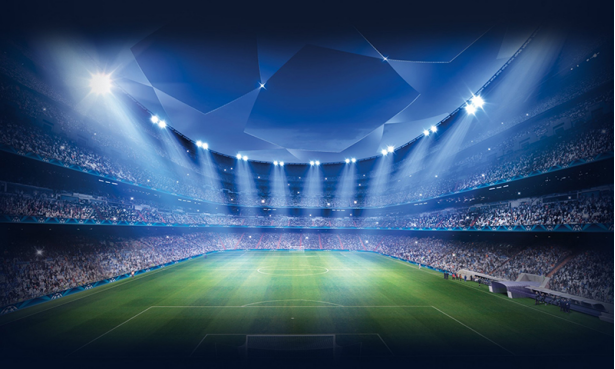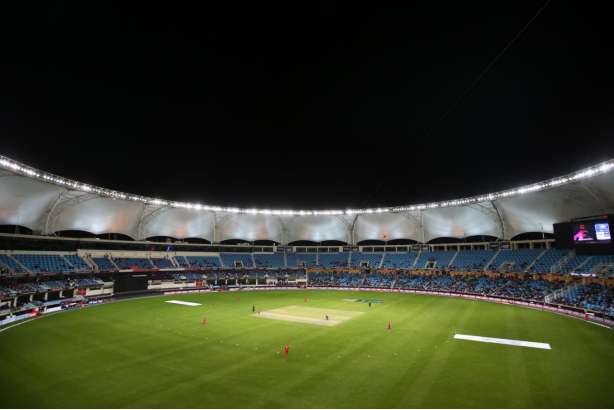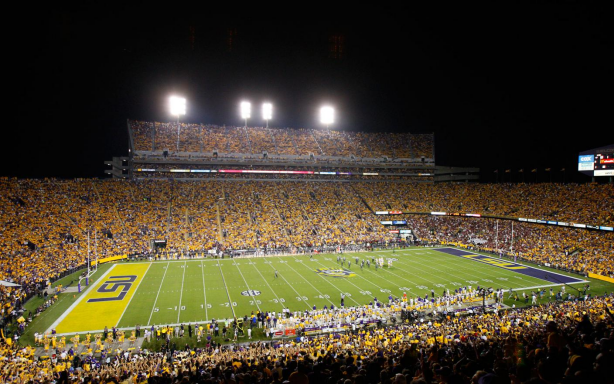Home >> News >> Industry News
Stadium lighting plays a crucial role in modern sporting events, and high-quality lighting can significantly enhance the visual experience of spectators and athletes. Good lighting can help spectators see the game more clearly and enhance the atmosphere of the scene. Lighting not only affects the visual effect of the game, but also directly related to the safety of athletes. Adequate lighting reduces the risk of injury during fast movement. In the case of low light during the day, the excellent lighting system allows the game to be played at night or on cloudy days, increasing the flexibility of the event schedule. Special effects lighting can add dramatic visual effects to the event, attract viewers, enhance brand image, and increase commercial sponsorship revenue.

Intelligent lighting systems use modern technologies, such as LED lighting, sensors and Internet of Things (IOT) technology, to achieve dynamic control and management of lighting. Unlike traditional lighting systems, smart lighting can automatically adjust brightness and color temperature based on real-time data (such as weather, number of spectators, etc.) to ensure the best lighting effect. Through smartphones or computers, managers can remotely monitor and control the lighting system, adjust and maintain it in real time, and improve efficiency. Minimize energy waste and achieve sustainable development through intelligent management.
Ⅰ. Contrast between traditional lighting and intelligent lighting
In modern life, lighting systems are everywhere, from families, offices to public places, the function of lighting is not only limited to providing light sources, but also to creating an atmosphere, improving safety levels and energy saving and environmental protection. In recent years, intelligent lighting, as an emerging technology, has gradually replaced the traditional lighting method, and is favored by more and more consumers. This article will systematically compare traditional lighting and intelligent lighting to help readers understand the differences and development trends between the two.
1. Definition and how it works
1.1 Traditional Lighting
Traditional lighting mainly refers to the lighting method based on conventional power supply, including incandescent lamps, fluorescent lamps and LED lamps. Its working principle is relatively simple, through the current flow heating filament or exciting gas and other ways, to produce visible light for people to use. This lighting method has been dominant in the past few decades, easy to operate, relatively low cost, but there are also difficulties in brightness adjustment, low energy efficiency disadvantages.
1.2 Intelligent Lighting
Intelligent lighting system is the use of modern technology, through the Internet and wireless communication technology, to achieve remote control of lighting equipment. Users can monitor and adjust lighting effects at any time through terminals such as smartphones, tablets or voice assistants. Intelligent lighting systems usually include a variety of advanced functions, such as brightness adjustment, color transformation, timing switch, scene mode, etc., to provide users with a more user-friendly experience.
2. Function comparison
2.1 Control Mode
The traditional lighting control mode mainly relies on physical switches, and users need to find switches to operate. Smart lighting can be controlled remotely by mobile devices and can even be operated by voice commands. This convenience is particularly important in modern fast-paced life, especially for people with mobility difficulties or deafness, and smart lighting provides a more humane solution.
2.2 Energy Saving Effect
Traditional lighting performs poorly in terms of energy efficiency, especially early technologies such as incandescent lamps, which usually convert most of the electrical energy into heat rather than light energy, resulting in energy waste. In the context of the global advocacy of energy conservation and environmental protection, intelligent lighting systems through automatic regulation, daylight sensing and other technical means, significantly reduce energy consumption, usually can achieve more than 50% energy savings, which to a certain extent help reduce the environmental burden.
2.3 Service Life
The service life of traditional lighting equipment is relatively short, especially incandescent lamps, which are generally 1,000 hours, fluorescent lamps 8,000 hours, and LED lamps, although improved, are usually about 15,000 hours. However, smart lighting combined with efficient LED technology, the service life can reach more than 25,000 hours. Through intelligent management, users can not only master the use status of the device, but also maintain it in time to extend the service life of the device.
1. Application scenario
3.1 Application of traditional lighting
Traditional lighting is mainly used in the home, commercial and industrial fields. In the family, the living room, bedroom, kitchen and other Spaces mostly rely on traditional lighting to meet the basic functions, and the shopping malls and supermarkets in the commercial environment mostly rely on conventional lighting to attract the attention of consumers.
3.2 Application of intelligent lighting
Intelligent lighting is used in a wide range of scenarios, including homes, offices, hotels and public facilities. In the home, intelligent lighting provides a variety of scene modes to meet different needs, such as theater mode, dinner mode, and so on. In the office environment, the intelligent lighting system can automatically adjust the light according to the working time and lighting conditions, improving the work efficiency of employees. In addition, smart lighting in public places, such as streets and parks, is also increasingly valued, through intelligent management, can improve safety and convenience.
Ⅱ. The core technology, characteristics and working mode of intelligent court lighting system
With the rapid development of science and technology, intelligent stadium lighting system has gradually become an important part of modern sports venues. Compared with traditional lighting systems, intelligent lighting systems can not only provide more efficient lighting solutions, but also flexibly adjust according to actual needs. This paper will deeply discuss the core technology, characteristics and working mode of intelligent court lighting system.

1. Core technology
1.1 LED lighting technology
LED (light emitting diode), as the core component of the intelligent stadium lighting system, has the advantages of low energy consumption, high efficiency and long life. Compared to traditional fluorescent or metal halide lamps, LED lights are able to consume less electricity at the same brightness, reducing the energy cost of venue operations.
1.2 Intelligent control system
Intelligent control system is the key to intelligent stadium lighting. Through the central control platform, venue managers can monitor and adjust the brightness and color temperature of the lighting in real time, and even realize the synchronization of the lighting and the competition process. For example, during the game, the lighting intensity in different areas can be adjusted as needed to enhance the spectator experience.
1.3 Sensor Technology
Sensor technology is used to sense information such as ambient lighting, the number of spectators and the activity status inside the venue, so as to automatically adjust the working mode of the lighting system. When there are more people in the hall, the system can automatically increase the brightness of the lights. When the venue is empty, the lights can be dimmed or turned off automatically to improve energy efficiency.
1.4 Internet connection and data analysis
Modern smart court lighting systems often have Internet connectivity to collect real-time usage data and optimize lighting strategies through data analysis. By analyzing data such as audience flow and activity types, managers can set up more scientific lighting schemes to maximize the utilization of lighting resources.
1.5 Drop protection and automatic repair technology
The smart court lighting system also incorporates fall protection and automatic repair technology. When the lighting equipment fails or is damaged, the system can quickly sense and automatically switch to the backup lighting to ensure the normal progress of the race. This technology improves venue safety and stability while also reducing the need for manual maintenance.

1. Features
1.1 High energy efficiency
The primary feature of the intelligent court lighting system is high energy efficiency. The application of LED technology significantly reduces power consumption, which can usually reduce energy consumption by at least 50% compared to traditional lighting. This energy saving feature is of great economic importance for large sports venues.
1.2 Flexibility and adjustability
The design of the intelligent lighting system allows the lighting intensity and color to be freely adjusted according to the needs of the event. This flexibility allows the venue to develop different lighting strategies for different types of events, such as competitions, performances or training, in order to enhance the venue's multifunctional utilization.
1.3 Enhance the spectator experience
Through the intelligent control system, the lighting can be adjusted in real time according to the venue atmosphere and rhythm changes, greatly enhancing the spectator experience. For example, increasing the brightness of the lights at the moment of an important score can further stimulate the mood of the audience and create a more enthusiastic atmosphere.
1.4 Security and Reliability
The safety of modern intelligent lighting systems has been significantly improved. Through automatic monitoring and fault self-examination technology, problems can be found and solved in time, so as to ensure the smooth progress of the race. In addition, the intelligent system has an emergency response capability to ensure adequate lighting support in case of emergencies.
2. Working mode
The working mode of the intelligent court lighting system mainly includes the following:
2.1 Automatic Mode
2.2 Default Mode
2.3 Emergency Mode
2.4 Remote Control Mode

In summary, intelligent lighting with its energy efficient, controllable, high comfort, good safety and environmental friendly multiple advantages, is gradually becoming an indispensable part of modern home and commercial space. With the continuous progress of science and technology and the change of people's lifestyles, the market demand for intelligent lighting will continue to grow. In the future, intelligent lighting technology will be more mature, and will certainly create a more convenient, comfortable and safe living environment for us. Under such a trend, the early adoption of intelligent lighting systems will be a wise choice to improve the quality of life.